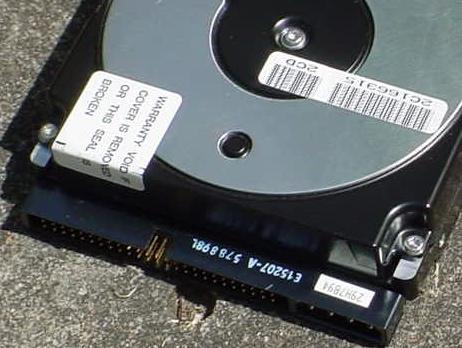
Photo: Red Hill.
IBM Deskstar XP
We could never decide whether we liked this excellent drive or the outstanding Seagate Decathlon 1080 better, so we stocked them both, side by side. It didn't make a lot of sense from a retailing point of view, we just liked having both of them on the shelves.
The two drives had very similar specifications, were very close to equal in speed — the IBM being better in the flesh than the raw specs would indicate — and either one made an excellent choice. We tended to favour the Decathlon with its then-new IDE Mode 4 interface for speed and the Deskstar for mission-critical work but in reality these were just excuses to stock both drives.
Over the years the Deskstar XP proved to be one of the two or three most reliable drives we had ever seen. Out of several hundreds, we returned none at all in the first year, and just one during the entire three year warranty period. That was not so especially unusual ten years later — Samsung did it as routine right through the 2000s — but it is still not something one can just expect as of right, and it was very unusual in the 1990s.
There was also a SCSI version of the Deskstar XP. We bought a pair of DPES SCSI drives for our main server in 1996. Both ran 24 hours a day, 365 days a year until about the end of 2002 (swapped to a less performance-critical machine by then) and one remained in service until about 2007, playing music in the workshop. I still have them, and though I haven't plugged either one in for more than a decade, I'd bet money that they would still work just fine.
| Performance | 0.87 | Reliability | AAA |
| Data rate | 55 Mbit/sec | Spin rate | 5400 RPM |
| Seek time | 10.5ms | Buffer | 512k |
| Platter capacity | 540MB | Encoding | RLL |
| Form | 3½ half height | Interface | IDE mode 3 |
| DPEA-31080 | 1.08GB | 4 MR heads | **** (IDE) |
| DPES-31080 | 1.08GB | 4 MR heads | * (SCSI) |